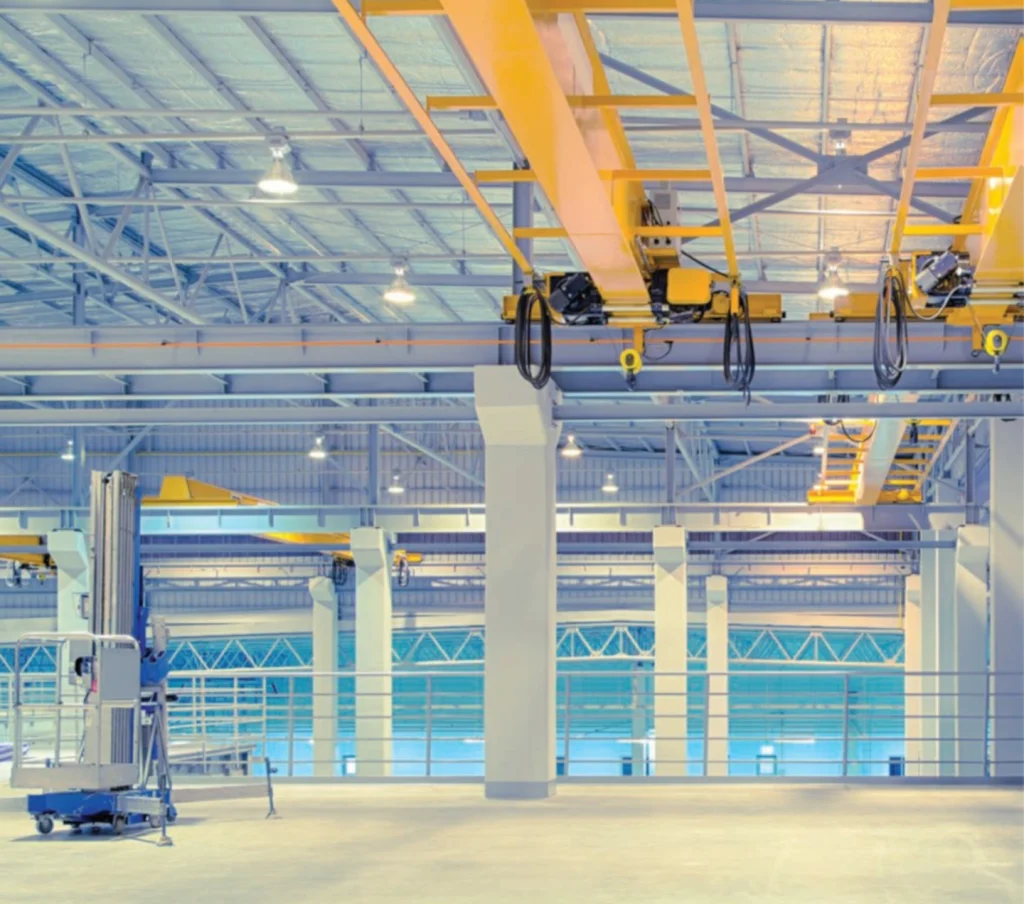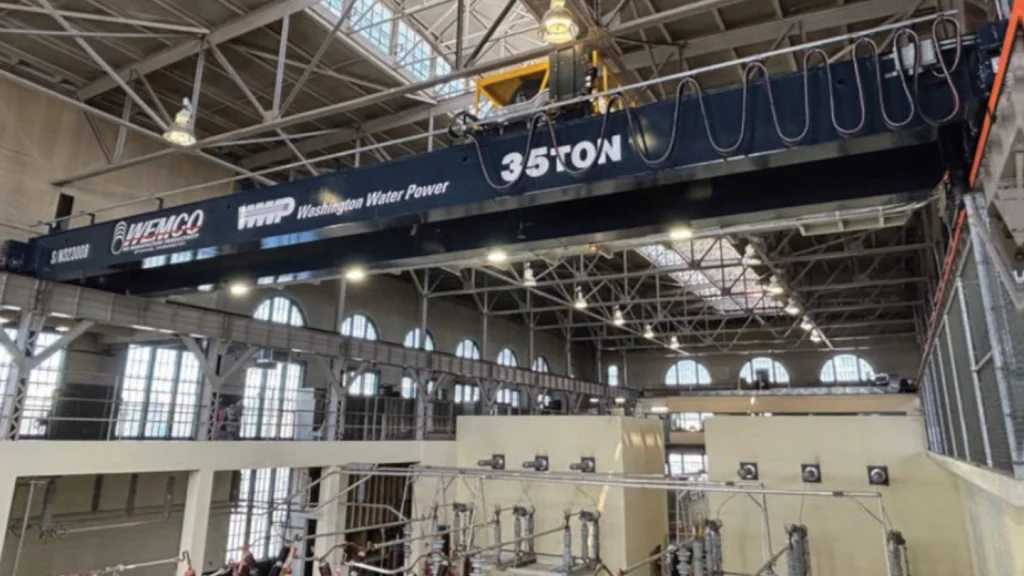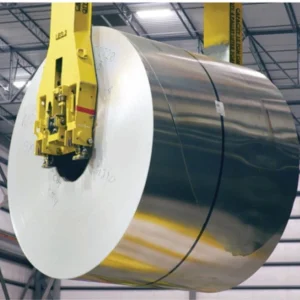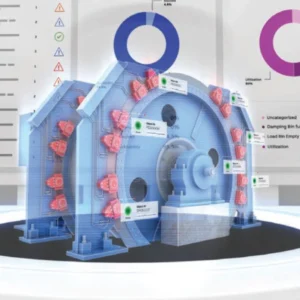
US manufacturing activity has been described by certain industry observers as being somewhat of a mixed bag with particular sectors clearly performing better than others and different views about what this will mean for demand for the overhead cranes and hoists that are used in domestic manufacturing plants.
“Overall the United States is currently in a time of maximum uncertainty,” Ken Simonson, the Associated General Contractors (AGC)’s chief economist, says, maintaining that while it isn’t unusual for there to be a lot happening as far as policy and economic changes, in the past the rate of change hadn’t been anywhere close to what we are now seeing under the Trump 2.0 presidency.
He says the Trump administration has been marked by constantly changing announcements about import tariffs and immigration policies as well as about cuts in federal spending for all kinds of programmes. This comes at a time when different widely followed forward-looking indicators’ perspectives vary.
Jason Schenker, president of Prestige Economics, pointed out that, in what has been a real pullback from the strong recovery that the manufacturing sector experienced in the wake of the Covid pandemic, the Institute for Supply Management (ISM) manufacturing purchasing managers index (PMI) – and to a somewhat different extent S&P Global’s manufacturing PMI – has reflected weakness in the manufacturing sector over the past few years.
For example, the ISM manufacturing PMI, which had indicated contractionary business conditions for 31 of the past 33 months, slipped for the fifth consecutive month in July to 48% at the same time as the S&P manufacturing PMI fell for the first time this year to 49.8%. Schenker attributed the most recent pullback to the high interest rates and more restrictive monetary policy environment.
But there is some question about how this relates to investments in both new manufacturing facilities and expansions of existing manufacturing plants, therefore, demand by manufacturing companies for overhead cranes and hoists.
Schenker pointed out that the results of his company’s MHI Business Activity Index (BAI), which measures demand for material handling equipment, have been consistently stronger than those of the manufacturing PMIs – an indication that the material handling industry (including the crane industry) is in a stronger position than the manufacturing sectors that use material handling equipment.
Comments from certain crane builders have confirmed this. For example, during his company’s recent quarterly earnings call president and chief executive officer Marko Tulokas says that despite some cautious behaviour by his American industrial customers, Konecranes’ order intake for equipment from companies in the aviation and aerospace, energy and metal sectors was strong in the second quarter.
However, he is not sure how that will hold up given that demand-related uncertainty and volatility due to geopolitical trade policy tensions could translate into higher uncertainty in the timing of orders and some postponement of maintenance activities with industrial customers, particularly in North America.
Turbulence ahead
While overall aerospace is one of the stronger sectors, Justin Rouse, Wemco’s vice president of business development says it hasn’t been without challenges, most notably because of the well-publicised issues that Boeing recently had necessitating it to upgrade some of its decaying infrastructure.
Similarly, he says that while metals manufacturers are generally doing well, Rouse explained that all of the uncertainty in the market has affected aluminium and other metals capital expenditure budgets.
But as far as the future of manufacturing activity, Timothy Van Audenaerde, global metals lead with Accenture, says that a lot depends upon the strength of the US economy, which is currently seen as having different impacts from different manufacturing sectors. He noted that, for example, there is reason to believe that there could be increased demand – including demand for material production – from the data centre and defence sectors.
Van Audenaerde, however, says that he is somewhat less optimistic on the automotive side given the uncertainty as to where cars will be built – whether the auto OEMs will be building or expanding production plants in the US or elsewhere.

He says that – at least upon US steel activity – the import tariffs have only had a small temporary impact, especially given that many companies had built up their inventories in anticipation.
“I don’t believe that there will be an immediate impact on investments,” Van Audenaerde says, given that investment decisions tend to be based on long-term views and business cases, and not short-term events. “The big question for the future will be how much of the local demand will still be completed by imports.”
While others also pointed out sectoral differences, Brian Roberts, market development manager for overhead cranes at Conductix- Wampfler, explains that overall, after declining in the fourth quarter of 2024 due to a decrease in demand and rising inventories, manufacturing activity has started to pick up again and, in some cases, returning to 2024 levels.
Roberts attributed that to several factors, including some more clarity over the Trump administration’s tariff policies, certain new investments by the federal government and a shifting – or anticipated shifting – towards increased domestic production in certain critical industries.
Ronald Piso, sales manager for G.W. Becker, agreed that there have been some reports that at least heavy manufacturing activity has been on an uptick, but manufacturers of durable goods are experiencing some mixed results depending upon the product and there have been some declines in the production of certain non-durables.
Stimulating the manufacturing sector
Certain Fastmarkets analysts have observed that this manufacturing activity tends to move in line with consumer confidence, which, as measured by the indices of both the Conference Board and the University of Michigan, trended downwards in recent months. Also, Roberts pointed out that the higher interest rates have also had an impact.
These market dynamics also affect manufacturing related construction. AGC’s Simonson pointed out that two years ago manufacturing had been a very hot segment as far as US construction activity, including some huge investments – or planned investments – particularly for facilities to manufacture semiconductors, electric vehicles and batteries for those EVs.
Simonson noted that these manufacturing investments had been stimulated by three big investment spending bills that were passed during the Biden administration – the Infrastructure Investment & Jobs Act (IIJA), the Inflation Reduction Act (IRA) and the CHIPS & Science Act.
However, some of the incentives in those bills either have or could be cut, and the US Census Bureau reported that, in June, US manufacturing spending declined for a fourth consecutive month that was 6.1% lower year on year.
It is uncertain whether that will change. In fact, Michael Guckes, chief economist at ConstructConnect, is projecting that on the back of several megaprojects, including the TSMC Fab 3 semiconductor fabrication plant in Arizona, the value of US manufacturing construction starts could increase by 38% in 2025.
Robert Beightol, director of marketing at Gorbel, says this comes as individual companies are examining ways to be more efficient in their manufacturing processes and making investments despite all of the global economic uncertainties.
He admits that companies are in the middle of trying to figure everything out and taking different approaches. “Some companies are waiting for more clarity before moving for with large investments while some other companies who may be experiencing pain currently but may see a rosy picture down the road are investing now.”
But, overall, Beightol says that companies are learning to work through the uncertainty that most industries are facing and to keep their eyes focused down the road as, for the most part, their pain should be short term with manufacturing activity likely to improve over the long run.
“Generally manufacturing companies have been making good decisions and have been successfully making money,” Piso says. Although he also noted that one wildcard is the tariffs, including where they will ultimately settle and what the end result will be once all is said and done – including their impact upon the onshoring of manufacturing.
Piso noted that while some onshoring is already occurring, it is uncertain when the impact of any additional moves in this direction will be felt as it takes time to make an investment, build a brick and mortar facility, hire workers and to install equipment – including cranes.
Conductix-Wampfler’s Roberts agreed, noting that typically overhead cranes and automated warehouse equipment are usually purchased and installed several months after projects are approved. That is definitely the case at new greenfield facilities, where it needs to follow the site acquisition and the initial infrastructure development.
Actions required, not just words
There have also been recent announcements of plans for reshoring of manufacturing, including the widely publicised mid-August announcement that GE Appliances is planning to relocate gas range production from Mexico to its newly upgraded LaFayette, GA, manufacturing facility.
Schenker says that he is expecting US OEMs to make further reshoring announcements – not just because of the tariffs themselves, but also because of Trump’s 31 July executive order, which contained a clause aimed at preventing the transshipment of imports by China and other countries in order to circumvent anti-dumping duties. He says that is sending an important message to the marketplace.

But given that there has been and will likely continue to be a high degree of caution when it comes to manufacturing and manufacturing related investments – and some instances of companies holding off, scaling down or cancelling projects until there is more clarity. “We need to see if actual actions will follow those words,” Simonson says.
He also explains that this is the case when it comes to manufacturers’ plans to either build new greenfield plants or to expand or upgrade existing facilities. For example, at the end of February, Air Products announced that it wouldn’t be going ahead with plans to build new facilities in California, New York and Texas. He also noted that Intel will only be building one semiconductor chip plant in Ohio as opposed to the five that it originally planned and that it has to stretch out the timeline for doing so to at least 2030.
Given these market dynamics, Rouse adds that overhead crane demand by manufacturing companies is currently flat to slightly down. However, he predicts that by mid to late 2026, as new US manufacturing facilities are built – pushed by expectations of a push for on-shoring or reshoring – and companies upgrade their existing facilities and equipment, that the crane demand will improve.
In fact, he points out that while the actual buying activity hasn’t picked up quite yet, Wemco is already seeing customer quoting activity starting to increase. “That gives us hope that things are going in the right direction.”
Adapting to market conditions
Others are more optimistic, citing the possibility that companies could even see a pickup in demand by later this year as there are also other factors that have been and will continue to affect the willingness of manufacturers to make investments. Piso says that one such factor is that, with the persistence of a labour shortage, many manufacturers have also been making investments in automating their facilities, not only to be able to produce their products efficiently but to be able to do so using fewer workers.
Beightol agreed, noting that this is a good fit with manufacturers’ desire to find additional ways to “do more with less” during this time when there are no solutions on the horizon as far as their shortage of skilled workers.
Schenker adds that jives with the most recent results of his company’s monthly MHI Business Activity Index, which continues to be stronger than most manufacturing data and data for many other sectors of the economy. He noted that this comes at a time when both transportation and industrial equipment has been, and continues to be a positive contributor to US GDP growth despite both being very expensive and, therefore, very interest-rate sensitive.
He expects that to continue to be the case, especially given that the demand is there for cranes and that producers’ backlogs of most material handling equipment, including cranes, are much lower than the had been two or three years ago with companies serving most manufacturing sectors working down their equipment backlogs.
This is coming at a time when, whether because of tariffs or other supply chain issues, many crane builders are looking to find more local suppliers for some of the components that they use, Roberts says. “Also, in some cases we are witnessing more on-site assembly at end users as demand increases and manufacturers need the space in their facility for the next build.”
Meanwhile, Piso pointed out that the manufacturers’ push for more automation in certain areas of their production processes includes the use of more automated cranes. He says that in response crane builders are looking to sell them either fully automated cranes or cranes that are able to be upgraded to be fully automated sometime in the future.
“But while there are currently more cranes with automation-type items on them, fully automated cranes are still few and far between,” Wemco’s Rouse declared. He, however, explains their automation will continue to progress and that, as new technologies are developed and become more mainstream, more automated cranes will be offered and more companies will be willing to buy them.
Rouse, however, says that it might take time for that to happen given that a lot of manufacturers are looking to be as cost-effective as possible and, at least currently, non-automated cranes tend to be much cheaper than those with automation features. “But once automated cranes become more mainstream and cheaper, more people will be interested in buying them.”
New innovations for new demands
When it comes to the drivers for overhead crane demand by the manufacturing sector, Piso says that it is more or less equal for those needed for either new greenfield facilities or upgrades to existing facilities, while the replacement of older cranes with newer ones with new capabilities being a bigger factor.
He notes that it isn’t just the push for greater automation that is pushing such replacements, but in some cases, companies have been switching from direct current (DC) powered cranes to alternating current (AC) powered cranes, or are interested in switching to faster cranes to be able to increase their output or they might be interested in adding an additional crane to an existing runway.
Rouse also points out that crane builders are continually developing new technologies to make their cranes safer, including adding anticollision features to ensure that they won’t hit another crane on the runway.
Overall, manufacturing-related overhead crane business has been pretty solid this year, even with the external factors that the OEMs have needed to work through, Beightol maintained.
“Manufacturing companies understand that making decisions through the noise of uncertainty is an important part of any business today,” he says. “But as long as they remain keenly interested in improving their productivity and protecting their workers and general manufacturing activity remains positive, the industry should remain very healthy.”
Prestige Economics’ Schenker agreed, stating that assuming that the Federal Reserve lowers interest rates, and that with increased national security priorities there is increased potential for reshoring, there should be upside opportunities both for the manufacturing sector and for overhead cranes through the end of this year and into 2026 and beyond that.





